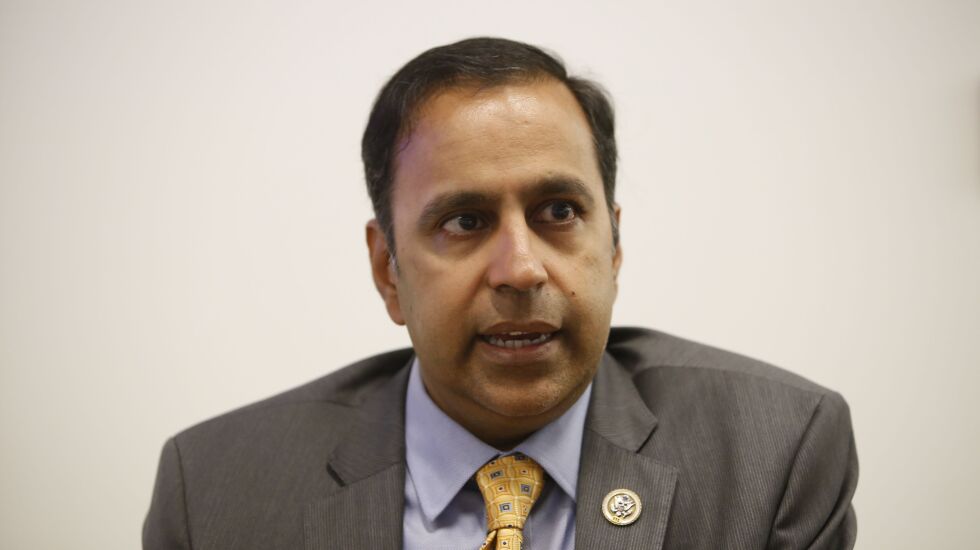
If you’re getting a strong and unpleasant sense of déjà vu about the new U.S. Census Bureau’s population estimates for counties, including Cook County, you’re not alone. U.S. Rep. Raja Krishnamoorthi, D-Ill., is feeling it as well.
Krishnamoorthi, who sits on the House Oversight and Accountability Committee, has been trying to force the Census Bureau to retool its population estimates because they have been so awfully inaccurate going back years and years.
The Census Bureau’s annual statewide population estimates released in December 2020 claimed Illinois had cumulatively lost an astounding 240,000 people over the previous decade, representing 2% of the state’s population.
The publication of those estimates every year showing sharp population declines regularly provoked an uproar in the news media and among pundits, particularly on the rightward end of the spectrum. And it came to a head in 2020, when the Census claimed Illinois had lost the equivalent of more than two Springfields.
But when the actual Census, based on real-life counts of human beings and not estimates, was published in 2021, the state’s population loss was pegged at 18,000 people, just 7.5% of the previously estimated loss.
The following year, after the Census Bureau delved deeply into its own numbers, the federal agency admitted it had blundered. The Bureau’s Post-Enumeration Survey, using what the Census Bureau said was a “statistical technique called dual-system estimation,” found that Illinois’ population actually grew by about 250,000 people, an almost 500,000-person shift from that December 2020 estimate.
Yet, here we are, back to reading about the results of annual U.S. Census surveys, and nobody seems to remember any of that history or has bothered to remind the public to take these estimates with a gigantic grain of salt.
This past December, the Census Bureau released estimates claiming the state’s population had fallen by 113,776 people, which prompted several handwringing stories without any historical context.
In January, Krishnamoorthi called on the Bureau to conduct a thorough methodological review of its estimate process. A month later, Krishnamoorthi received a communication from the Bureau saying this review would, indeed, be done, but “potential” changes using tools from the Post-Enumeration Survey wouldn’t be implemented until this coming December at the very earliest, if at all.
Which brings us to last week.
“Cook County lost 68,000 people last year, Census Bureau says,” blared a recent Crain’s Chicago Business headline about the Bureau’s newly released “Vintage 2022 estimates.” The story included no context about the wild inaccuracy of previous Census Bureau estimates.
Crain’s wasn’t alone. “Cook County population drop second-worst in country,” declared a Sun-Times headline. That story, too, did not include any context of prior errors. “Baseball season has begun and Cook County residents are going, going, gone by the tens of thousands, according to the U.S. Census Bureau’s latest estimates,” the story began.
“Census data shows urban counties rebounding, but Cook County’s population has yet to recover from pandemic dip,” was the Chicago Tribune’s take, also without any reference to the Bureau’s previous blunders.
The Bureau’s faulty estimates did vast reputational harm to the state during the previous decade and centered intense public debate around proposed policy fixes to halt what was thought to be a huge population decline, which turned out not to be real when actual noses were counted. And even then, a post-count examination found the physical headcount was short by a very large margin.
So, Krishnamoorthi has written yet another letter to the Census Bureau demanding answers. The latest estimate “appears to echo” earlier data “that drove misleading narratives and rhetoric surrounding purported population losses in Illinois which were subsequently revealed to be unfounded,” the Schaumburg Democrat wrote to Bureau Director Robert Santos.
And the numbers don’t just harm the state’s reputation and provoke public debates based on faulty data, but they can have a major impact on federal funding the state receives.
“Beyond the implications such data have for our understanding of our state’s population dynamics,” Krishnamoorthi wrote, “Census Bureau data will be utilized over the next decade to allocate roughly $1.5 trillion in federal funding through approximately 100 programs, including Medicaid, SNAP, Medicare, Highway Planning and Construction, and Pell grants.”
The rest of the state’s congressional delegation, including our two U.S. senators, should step up and join Krishnamoorthi’s calls for change at the Census Bureau. And in the meantime, the news media in this state ought to stop flushing the Bureau’s past mistakes down the collective memory hole.
Rich Miller also publishes Capitol Fax, a daily political newsletter, and CapitolFax.com.
The Sun-Times welcomes letters to the editor and op-eds. See our guidelines.







